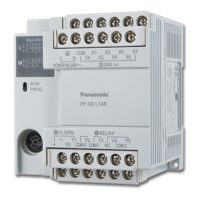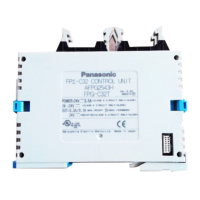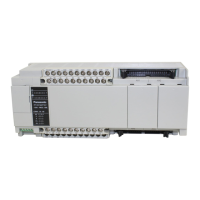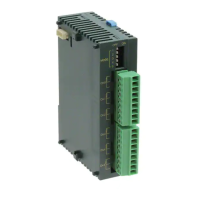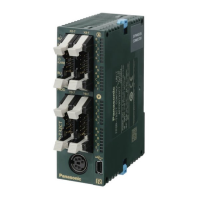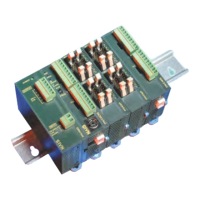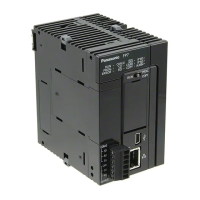Basics
37
Execution with a falling edge:
1.2.6.1 Restrictions of pulse relay (P)
A pulse relay can only be used once in a program as an output destination, i.e. duplicate output is prohibited.
There is no limitation on the number of times a pulse relay can used as a contact.
A pulse relay cannot be specified as an output destination for a KP, SET, RST or ALT instruction.
A word unit pulse relay (WP) cannot be specified as a storage location for a high-level instruction.
In Control FPWIN Pro pulse relays can only be used in the above situations or together with a DF or DFN
instruction. Although one reason might be to increase the number of relays, there is no special reason to use
these pulse relays in Control FPWIN Pro.
1.2.7 External input (X) and output relays (Y)
The external input relays available are those actually allocated for input use.
The external output relays actually allocated for output can be used for turning ON or OFF external
devices. The other external output relays can be used in the same way as internal relays.
I/O allocation is based on the combination of I/O and intelligent modules installed.For FP10SH and
FP2SH, 8,192 points can be used, including both input and output. For FP2 and FP3, 2048 points
can be used.
Example
01234
(Slot No.)
Power supply
unit
CPU
Input unit
(16 points)
Output unit
(16 points)
Y10 to Y1F
X0 to XF
The X0 to XF 16-point external relay is
allocated to the 16-point input unit in
slot 0, and the Y10 to Y1F 16-point
external output is allocated to the
16-point output unit in slot 1.
The sixteen points X10 to X1F cannot
be used in this combination.
1.2.8 Word representation of relays (WX, WY, WR, and WL)
The external input relay (X), external output relay (Y), internal relay (R) and link relay (L) can also be expressed
in word format. The word format treats 16-bit relay groups as one word. The word expressions for these relays
are word external input relay (WX), word external output relay (WY), word internal relay (WR) and word link
relay (WL), respectively.
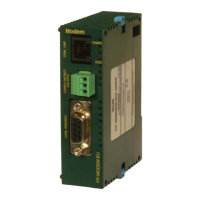
